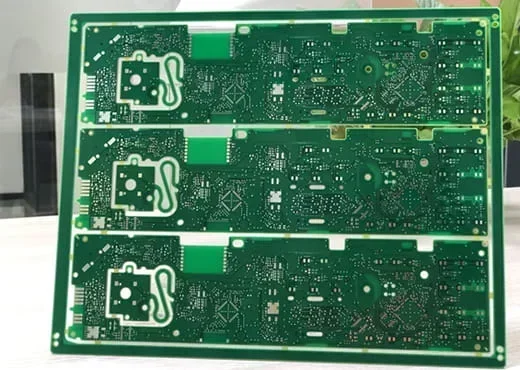
Welcome to our in-depth look at the top 10 PCB makers in the world in 2023. This article will introduce these PCB manufacturers and compare them for your reference.
We will talk about the PCB companies shaping the future of electronics manufacturing. Stay tuned to discover what these PCB manufacturers do well and not. Let's dive in!
Overview of the PCB Industry in the World
The PCB industry is a vital part of assembling electronics and growing worldwide. Printed circuit boards (PCBs) are the foundation for electronic devices.
They provide connections and support for the wiring. What do you know about different PCB manufacturers? This summary examines the PCB business, focusing on the top 10 PCB manufacturers.
PCB Market Size and Growth
- 3.3% predicted global growth of PCB industry from 2021-2026
- Change driven by rising demand for PCBs and increased use of electronic devices
- The PCB industry is expected to grow at 4 and 4.12% annually
- The projected value of the market in 2027 is $107.3 billion
Demand Drivers
- Flexible PCBs and high-density interconnect (HDI) are gaining popularity
- A big part of the industry comprises consumer devices like cell phones, wearables, and smart home gadgets
- The Asia-Pacific region, particularly China, has a large market
- High demand for PCBs due to increased electric vehicles and intelligent health systems in vehicles
Application of Advanced PCBs
- High-frequency PCBs are used for telecommunication, aerospace, automotive, and military devices such as radar
- PCB manufacturers such as PCBONLINE are RoHS certified and follow the halogen-free directive to provide lead-free and halogen-free PCB boards
Focus on Environmental Sustainability
- PCB manufacturers researching the utilizing biodegradable materials like natural composites and environmentally friendly methods
- Ceramic PCBs and copper-base PCBs are using more and more for high-current and thermal applications
Top 10 PCB Manufacturers in the World in 2023
Here we list the top 10 PCB manufacturers in the world and introduce them one by one.
|
PCB Manufacturer
|
Headquarter
|
Expertise
|
Price Range
|
Strengths
|
Weaknesses
|
|
AT&S
|
Austria
|
All kinds of advanced PCB,
PCB bulk production |
Expensive
|
Well-established reputation
|
Relatively expensive,
Slow delivery |
|
TTM Technologies Inc.
|
US
|
All kinds of advanced PCB,
PCB bulk production |
Expensive
|
Specializes in high-volume production,
Offers a broad range of capabilities and technologies |
Relatively expensive,
Slow delivery, Mixed customer reviews |
|
PCBONLINE
|
China
|
All kinds of advanced PCB
PCB prototypes and bulk production |
Affordable
|
Offers a broad range of capabilities and technologies,
High-quality products, Competitive pricing, Quick-turn capabilities to meet tight deadlines, Positive customer feedback |
Potential language barriers
|
|
Zhen Ding Technology
|
Taiwan
|
All kinds of advanced PCB
PCB bulk production |
Expensive
|
Offers a broad range of capabilities and technologies,
High-quality products, Receives positive customer feedback |
Accepts only bulky orders from large OEMs
|
|
Tripod Technology Corp.
|
Taiwan
|
HDI PCBs, Flexible PCBs,
PCB bulk production |
Moderate
|
Receives positive customer feedback,
High-quality products |
Accepts only bulky orders from large OEMs
|
|
Unimicron Technology Corp.
|
Taiwan
|
All kinds of advanced PCB
PCB bulk production |
Moderate
|
Receives positive customer feedback,
Demonstrates a strong track record in the industry |
Accepts only bulky orders from large OEMs
|
|
Advanced Circuits
|
US
|
All kinds of advanced PCB
PCB prototypes and bulk production |
Expensive
|
Maintains an established presence in the US market
|
Mixed customer reviews,
Relatively expensive
Slow delivery |
|
NOK Corporation
|
Japan
|
Flexible PCB
PCB bulk production |
Expensive
|
Receives positive customer feedback,
High-quality products |
Relatively expensive
|
|
Daeduck Electronics Co. Ltd.
|
South Korea
|
All kinds of advanced PCB
PCB bulk production |
Expensive
|
Offers a broad range of capabilities and technologies
|
Mixed customer reviews
Relatively expensive |
|
Cisel
|
Italy
|
Expensive
|
Innovative, small-sized gadgets
|
Limited availability of PCB fabrication
Relatively expensive Slow delivery |
AT&S (Austria)
AT&S has been in business since 1987 and has quickly become a lead PCB manufacturer because of its great products and creative ways of solving problems.
Their printed circuit boards, such as IC substrate boards, work for the automotive, manufacturing, medical, and telecommunications industries.
AT&S is a multinational company with offices in Austria, India, Korea, and Malaysia. They have set up locations worldwide to meet the needs of a wide range of customers.
AT&S is a company that supplies high-quality PCBs and integrated circuit substrates.
Their products are used globally for transportation, healthcare, and communication technologies.

However, AT&S PCBs are way more expensive than Chinese boards. And Chinese PCB companies like PCBONLINE also provide advanced PCBs with quality even better.
TTM Technologies Inc. (US)
- Pros: advanced PCB manufacturing, high quality, multinational group scale
- Cons: expensive PCB, slow delivery, accepts only bulky orders
TTM Technologies Inc., founded in 1978, rules the world when making and putting together circuit boards.
They serve industries like aerospace, defense, automotive, and healthcare.
The group helps all kinds of markets find their place. From spacecraft to soldiers, cars to clinics, many different areas get their PCB supplies from the provider.
TTM Technologies Inc. is a global company with offices, and help centers worldwide. Their skill in making and building PCBs ensures that the design and construction are of high quality.
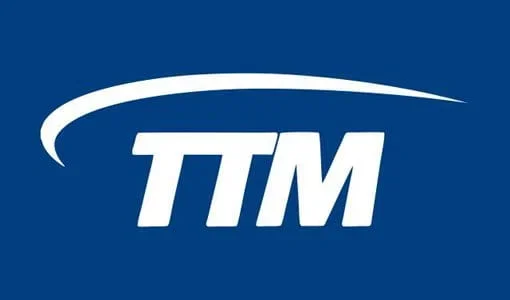
However, the drawback of TTM is the same as AT&S, the high PCB and PCBA prices. Besides, the lead time of PCB fabrication from TTM is much slower than its competitors in China.
PCBONLINE (China)
- Pros: advanced PCB manufacturing, high quality, affordable price, one-on-one engineering support, fast delivery, one-stop PCB services
- Cons: potential language barriers
PCBONLINE is an advanced PCB source factory manufacturer in China. They offer one-stop PCB fabrication and assembly services for middle and high-end applications to meet client's needs worldwide.
Unlike AT&S and TTM which are multinational PCB suppliers, PCBONLINE's electronic manufacturing is located in China. But it serves original equipment manufacturers, research institutes, and business makers worldwide.
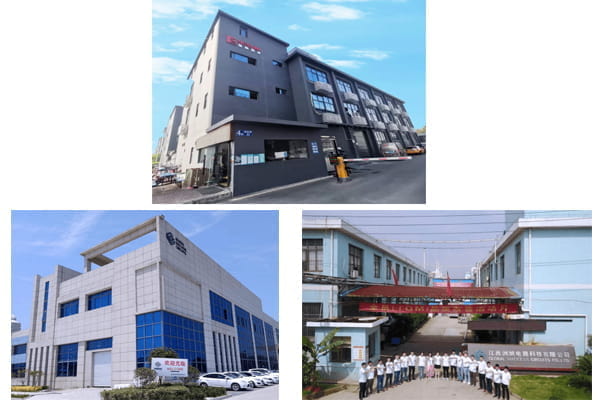
The brand PCBONLINE is founded in 2014, which is far later than the above two PCB manufacturers. But its first PCB factory was founded in 1999. That is to say, PCBONLIE is the PCB online factory store for its mother company the Global Success Group.
After 24 years of development in advanced PCB fabrication and assembly, nowadays, PCBONLINE has two large advanced PCB manufacturing bases in Jiangxi and Jiangsu. And its PCB assembly factory is located in Shenzhen of Guangdong province.
You can have all kinds of printed circuit boards manufactured and assembled from PCBONLINE, including FR4 PCBs, MCPCBs, ceramic PCBs, HDI PCBs, high-frequency PCBs, flexible PCBs, and rigid-flex PCBs.
Same as AT&S and TTM, PCBONLINE's PCB boards work for automotive, industrial, medical, telecommunications devices, and consumer electronics.
However, the PCB and PCBA from PCBONLINE are much more affordable because of their source factory manufacturing, rich experience in design and fabrication, and lower costs for logistics, factory rents, energy, and labor resources.
Additionally, they offer one-on-one engineering support throughout your project no matter how many boards you need.

The only drawback of this Chinese PCB manufacturer is the potential language barrier between you and the CAM engineer from PCBONLINE. But no worries, you will have a specialized customer support specialist to translate and answer your questions.
Zhen Ding Technology (Taiwan)
- Pros: top 1 PCB manufacturer in the world, one-stop PCB service, high-quality, advanced PCB manufacturing, a listed company
- Cons: accepts only bulky orders for large-scale OEMs
Zhen Ding Technology Holding Limited was founded in 2006. The PCB manufacturer is under the Hon Hai Group, ranking first among the global PCB manufacturers.
Zhen Ding Technology is engaged in the PCB design, development, and manufacturing of various printed circuit boards. The PCB product items include rigid PCB, flexible PCB, HDI, and IC substrate boards.
And these PCBs are used for computers, communication, automotive, medical, and consumer electronics.
Zhen Ding Technology is one of the PCB and assembly suppliers for Apple, which is their largest client.

Due to the scale reason, Zhen Ding Technology only accepts bulky orders from large OEMs such as Apple.
Middle and small-scale OEMs, research institutes, and business makers can work with another PCB manufacturer PCBONLINE to order one-stop PCBs with quality as high as Zhen Ding.
Tripod Technology Corp. (Taiwan)
- Pros: a listed company, high quality, good at double-sided PCB and multilayer PCB
- Cons: accepts only bulky orders, price higher than Mainland Chinese PCB manufacturers
Tripod Technology Corp. was started in 1990 in Taiwan and its first business was selling the POS system. In 1996, it started the printed circuit board business.
Nowadays, it has grown to be one of the top 10 PCB manufacturers in the world.
The Taiwan-based company focuses on double-sided PCBs and multilayer PCBs. Their services are used by the telecommunications, automotive, and consumer electronics industries.
Tripod Technology Corp. has much experience making PCBs with many connections. Electronic parts can be made smaller and lighter with the help of compact technology, which makes devices smaller and lighter.
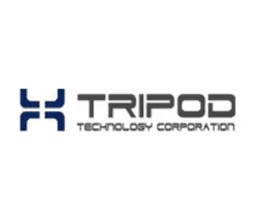
However, the PCB fabrication price of Taiwan PCB manufacturers is higher than those in Mainland China. So is Tripod Technology vs PCBONLINE.
The reason is that Mainland Chinese PCB manufacturers such as PCBONLINE do better than Tripod in faculty stability, product yield, process optimization, and energy saving.
Unimicron Technology Corp. (Taiwan)
- Pros: a listed company, high quality, good at HDI PCB and IC load boards
- Cons: accepts only bulky orders, price higher than Mainland Chinese PCB manufacturers
Unimicron Technology Corp. has been in business for around 30 years. From its base in Taiwan, it has become a leading supplier of compact interconnection printed circuits to IC load boards for semiconductor wafer production.
Small circuit sheet manufacturing is one area where Unimicron shines with its notable skills. The production of HDI by them enables their contribution to the miniaturization and compactness of electronic devices.

However, Unimicron's business has declined in recent years. It has fewer cost advantages than PCBONLINE, and PCBONLINE can also fabricate HDI PCBs and IC load boards.
Advanced Circuits (US)
- Pros: advanced PCB manufacturing, US-based manufacturer, more PCB shipping options
- Cons: expensive PCB, long wait-up time, product quality not as good as Chinese PCB manufacturers
Based in Colorado in the US since 1991, Advanced Circuits makes printed circuit boards, for the military and aerospace industries to the medical and telecommunications fields.
Advanced Circuits is known for making PCB solutions that are advanced.
The non-US PCB manufacturers provide US clients with only air shipping and sea shipping by DHL, FedEx, and UPS. But from the US-based manufacturer Advanced Circuits, you can also choose road and rail shipping.

The drawbacks of Advanced Circuits are the expensive prices and long wait-up time for PCB fabrication. According to the feedback of clients that have quoted from different PCB manufacturers, for the same PCB project, Advanced Circuits quotes several times higher than PCBONLINE, and their lead-time starts from two weeks for PCB prototypes and one month for bulk production.
NOK Corporation (Japan)
- Pros: flexible PCB manufacturer, a listed company, multinational scale
- Cons: expensive PCB
NOK Corporation is a Japanese company established in 1939. Their area of expertise is cars, toys, and medical applications, and their main PCB products are flexible circuit boards.
NOK Corporation's flexible circuit sheets are a good choice for applications as different as portable electronics and heavy machinery because they are flexible and easy to assemble.

However, NOK's PCB business has declined for years, and they laid off 30% of employees in 2020. The flexible PCB fabrication cost of NOK is higher than PCBONLINE. And their lead time is longer.
Daeduck Electronics Co. Ltd. (South Korea)
- Pros: advanced PCB manufacturing, a listed company
- Cons: slow delivery, potential language barrier, PCB price higher than Mainland Chinese PCB manufacturers
South Korea's Daeduck Electronics Co. was incorporated in 1972 in South Korea.
The company makes custom electronic circuit boards for various industries, such as hard drive interface panels.
Daeduck Electronics has different PCB solutions to meet the needs of many fields. Its main PCB products include rigid-flex PCBs, HDI PCBs, and flexible PCBs.

Compared with the Chinese PCB manufacturers, the PCB fabrication cost of Daeduck is higher, and the delivery time is longer.
Cisel (Italy)
- Pros: environmental responsibility, PCB manufacturer in Europe
- Cons: expensive PCB, slow delivery, limited PCB options
Cisel's foundation dates back to 1976, and it is a private-own PCB manufacturer. As a European PCB company, it emphasizes environmental responsibility.
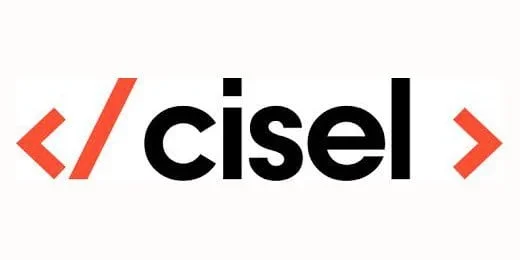
From Cisel, you can have single-sided and double-sided PCBs, flexible PCB, and rigid-flex PCBs manufactured.
The disadvantage of Cisel is that they can't complete some PCB processes like hard gold plating, which involves chemical sewage treatment and discharge.
Besides, Cisel can't manufacture advanced PCBs such as HDI PCBs and ceramic PCBs. But from another PCB manufacturer PCBONLINE, you can have all kinds of advanced PCBs manufactured.
Recommendations for One-Stop PCB Manufacturer
Based on the comparison, PCBONLINE comes highly recommended because of its advanced PCB manufacturing capabilities, affordable prices, fast turnaround times, and positive support and services.
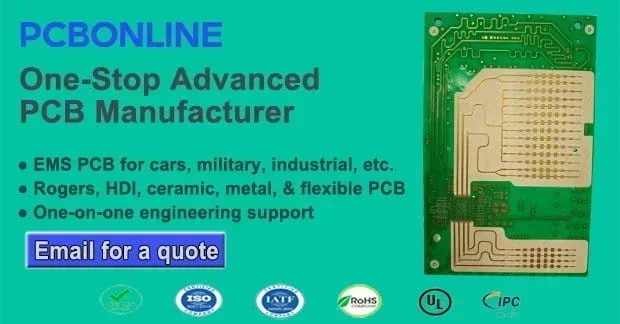
You can check PCBONLINE's PCB fabrication capabilities below:
- PCB layers: 1 to 64
- PCB substrate types: FR4, aluminum, copper, ceramics, PTFE (Rogers), polyimide, polyester, glass
- Fastest lead time: 8 working hours
- Board quantities: 1 to 100,000+
- Work for industries: industrial, automotive, telecommunication, medical, aerospace, military, computer, and consumer electronics
- Reference price: HDI PCB $0.1/piece,
FR4 PCB $0.05/piece,
aluminum PCB $0.03/piece,
ceramic PCB $8/piece,
copper-base PCB $5/piece,
Rogers PCB $10/piece,
flexible PCB $0.3/piece,
rigid-flex PCB $0.5/piece
Conclusion
The top 10 PCB manufacturers in the world showed their brilliance through creativity, quality, and dedication to meeting customer needs. PCBONLINE is a reliable and all-around PCB manufacturer among its top competitors. It focuses on developing new solutions and offers a wide range of manufacturing and assembly services to meet clients' needs worldwide. Use the expertise of these top PCB manufacturers, and make smart choices for your PCB projects.




